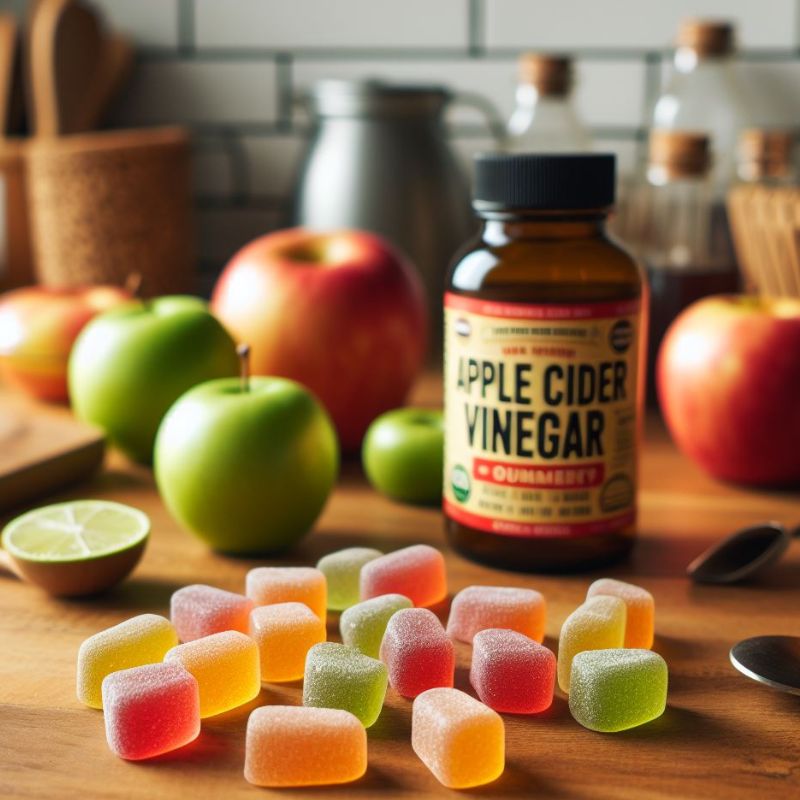ACV for Kids: Safe Ages & Tasty Recipes for Little Ones

Modified on Nov 30, 2023 |
Written by Deirdre Layne
Apple cider vinegar (ACV) is a popular health tonic with various benefits, but when administering it to children, parents should proceed with caution. This article provides insights into the appropriate age for introducing apple cider vinegar to a child's diet and offers some kid-friendly recipes.
When Can Children Start Having Apple Cider Vinegar?
- Age Consideration: Generally, it is safe to introduce apple cider vinegar to children around 2-3 years old. However, this should be done in very small amounts and diluted well.
- Consult a Pediatrician: Before adding ACV to your child's diet, it's crucial to consult a pediatrician, especially if your child has health issues or is on medication.
- Dilution is Key: ACV should always be diluted with water to reduce its acidity for children. A common ratio is 1 teaspoon of ACV to 8 ounces of water.
Apple Cider Vinegar Recipes for Kids and Toddlers
1. Honey Apple Cider Drink
- Ingredients: 1 teaspoon ACV, 8 oz water, 1 teaspoon honey.
- Preparation: Mix ACV with water, stir in honey until dissolved. Serve chilled.
- Benefits: This drink is a milder version of ACV and is sweetened with honey to make it palatable for children.
2. Apple Cider Vinegar Fruit Punch
- Ingredients: ½ teaspoon ACV, 1 cup mixed fruit juice, slices of orange or apple for garnish.
- Preparation: Combine ACV with fruit juice. Add fruit slices for a fun twist.
- Benefits: The fruit juice masks the taste of the vinegar, making it more enjoyable for kids.
- Considerations: While this recipe is a great way to introduce ACV to kids, it's important to be mindful of the sugar content in fruit juice. Excessive sugar consumption can compromise the immune system and exacerbate certain health issues. To mitigate this, consider using freshly squeezed juice or diluting the juice with water to lower the sugar content.
3. Apple Cider Vinegar Gummies
- Ingredients: 1 cup apple juice, 2 tablespoons ACV, 3 tablespoons gelatin powder.
- Preparation: Heat apple juice, mix in gelatin until dissolved, add ACV. Pour into molds and refrigerate.
- Benefits: A creative way to include ACV in your child’s diet. These gummies are fun and easy to consume.
4. ACV Salad Dressing
- Ingredients: 1 teaspoon ACV, 3 teaspoons olive oil, a pinch of salt, and pepper.
- Preparation: Whisk all ingredients together and drizzle over salad.
- Benefits: Introduces ACV in a subtle manner. It’s perfect for drizzling over salads or vegetables.
Safety Tips and Considerations
- Avoid Undiluted ACV: Never give children undiluted apple cider vinegar as it can harm their tooth enamel and esophagus.
- Monitor for Reactions: Pay attention to any adverse reactions, such as digestive discomfort.
- Moderation is Crucial: ACV should be consumed in moderation. Excessive consumption can lead to negative health effects.
Conclusion
While apple cider vinegar can be a healthy addition to a child’s diet, it is important to introduce it safely and in moderation. The key is to start with small, diluted amounts and always to prioritize your child’s health and preferences. By incorporating ACV into delicious recipes, you can make it a pleasant experience for your little ones.
Please keep reading to discover how Earth Clinic users have utilized apple cider vinegar for treating their children's health issues, including the specific dosages they applied.
Read More